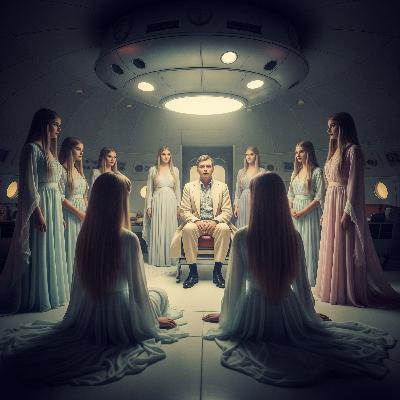J. Allen Hynek: The Scientist Behind Close Encounters & The Fight for UFO Science
Description
Let's explore the remarkable life and dual careers of Dr. J. Allen Hynek, the astronomer who became the U.S. Air Force's scientific consultant on Unidentified Flying Objects (UFOs).
Initially dismissing UFO reports as "sheer nonsense" and a "psychological postwar craze," Hynek spent nearly twenty years debunking sightings for the Air Force's Project Sign, Grudge, and Blue Book. He accepted his role, which began in the spring of 1948, with a "sense of sport" to help clear away "nonscience."
However, the persistence of the phenomenon, not only in the United States but globally, began to change his views. Hynek found that while many reports could be explained as misidentifications of astronomical objects or man-made phenomena, a significant residue remained "unexplained." Notable cases like the Thomas Mantell crash, the Chiles-Whitted rocket-like object seen by airline pilots, the strange sightings in Levelland, Texas, where vehicles died, the Lonnie Zamora landing case with physical traces and occupants, and the multiple witness sightings in Papua New Guinea challenged conventional explanations.
Hynek began to demand that the government and scientific establishment conduct a serious study of the phenomenon. He faced ridicule from many scientific colleagues, including astronomer Carl Sagan, who viewed belief in UFOs as a "demeaning need for humans to believe in benevolent, omnipotent beings." Hynek countered that ridicule was not part of the scientific method and that "the number of truly puzzling incidents is now impressive." He argued that some reports were from "reliable, stable, and educated people" and even scientifically trained individuals.
Frustrated by the Air Force's handling of reports, including the infamous Michigan swamp gas explanation that caused national sensation and public fury, Hynek publicly critiqued Project Blue Book's methodologies. He developed a classification system for UFO sightings, most notably the "Close Encounters," categorized into First, Second (with physical effects), and Third (with occupants) Kinds, which he introduced in his seminal book The UFO Experience: A Scientific Inquiry.
In 1973, Hynek announced the formation of the Center for UFO Studies (CUFOS), a scientific research organization dedicated to the study of the UFO phenomenon, which became the J. Allen Hynek Center for UFO Studies. CUFOS aimed to operate as a clearinghouse for reports, pursue rigorous analysis, and coordinate efforts among different fields of study.
Hynek's work gained popular recognition when director Steven Spielberg adopted the "Close Encounters" terminology and consulted Hynek for his 1977 film Close Encounters of the Third Kind, in which Hynek also made a brief cameo appearance. The film's release led to a significant increase in reported sightings to CUFOS, making talking about UFOs "more socially acceptable."
From pioneering astronomical imaging and satellite tracking systems to dedicating his later life to the scientific study of UFOs, J. Allen Hynek championed curiosity and the investigation of the unexplained. He believed the phenomenon was real, whatever its ultimate nature, and persisted in his efforts despite skepticism and opposition. As noted by one historian, "Hynek’s vacillation on the subject was proof of his scientific integrity." His legacy endures, having single-handedly brought consciousness of the UFO phenomenon to the forefront of world culture.







